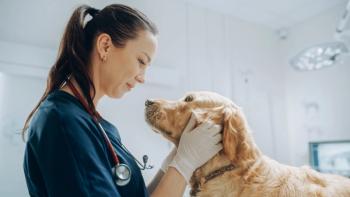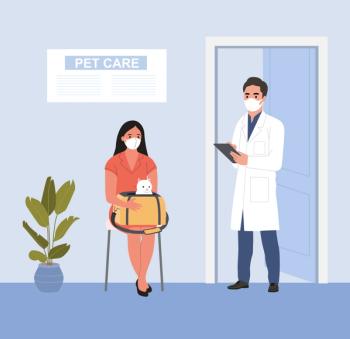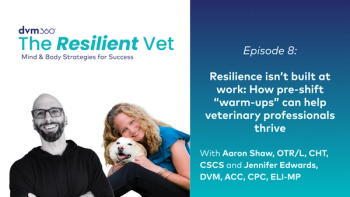
From stealth to signals: How artificial intelligence is transforming feline medicine
When it comes to feline health, listen when silence speaks.
A powerful survival instinct that cats have is the ability to hide pain. As both predators and prey, cats evolved to mask signs of illness or injury to avoid being seen as vulnerable. In the wild, this meant safety. In clinical practice today, it often means late diagnoses and missed opportunities for early care. Cats are subtle when they’re unwell, which contributes to one of the most persistent challenges in veterinary medicine: feline undermedicalization.
The feline care gap
Although an estimated 74 million domesticated cats are in the US, only 40% receive annual veterinary care compared with 82% of dogs.1,2 According to the CATalyst Council, the current feline veterinary market is valued at $12 billion; however, if cat utilization matched that of dogs, the market could expand to $32 billion, representing an untapped $20 billion opportunity.3 Encouragingly, feline visits and revenue have grown even as other segments have plateaued. Yet detecting what cats instinctively hide continues to be the greatest barrier.
Understanding silent symptoms
Illness in cats rarely begins with dramatic signs. Instead, it starts with small behavioral shifts, including the following:
- A subtle decline in jumping
- Changes in sleep cycles
- Less frequent or reduced play behavior
- Changes in eating and drinking behavior
- Altered litter box behavior and usage
- Reduced grooming or altered body posture
- Withdrawal or increased nighttime activity
Because cats tend to suppress these signs, especially in stressful environments like veterinary clinics, they often go unnoticed. This creates a species-specific blind spot in veterinary medicine.
Aligning with feline instincts to close the care gap
The medicalization gap isn’t just a matter of caregiver hesitation or access; it’s rooted in feline biology. Cats have evolved to hide signs of vulnerability. To close the gap, veterinary medicine must find ways to work with this reality, not against it.
This is where artificial intelligence (AI)-powered tools come in. By observing cats continuously in their natural, stress-free environment, new technologies are surfacing subtle early changes that humans alone often miss. These tools don’t force cats to communicate; they interpret what cats are already expressing through behavior.
Emerging tools that translate the subtle
One innovation in this space is Moggie, a behavior-tracking wearable explicitly designed for cats. Moggie monitors core feline behaviors, including walking, jumping, resting, grooming, and playing, by using AI to detect deviations from each cat’s individual baseline. It helps surface meaningful behavioral changes that could indicate early illness or discomfort.
This technology is passive, noninvasive, and designed for continuous use in the cat’s natural habitat, where stress levels are low and instinctual behaviors are most pronounced.
Early patterns from caregivers and clinics using AI-driven behavior tools have shown promise, such as the following:
- Decreased jumping flagged early-stage arthritis
- Fragmented sleep and pacing pointed toward hyperthyroidism
- Reduced grooming revealed underlying dental pain
These insights don’t replace veterinary exams; they complement them, giving caregivers and clinicians richer, continuous behavioral context between visits.
From silence to signals
By equipping caregivers with objective insights and reducing reliance on subjective observation alone, AI-powered tools can:
- prompt earlier veterinary visits;
- improve chronic disease monitoring;
- strengthen caregiver-clinic communication; and
- increase trust and adherence over time.
This approach aligns directly with the CATalyst Council’s call for proactive, tech-enabled, and cat-centric models of care that meet cats on their terms, not just in exam rooms.4
Cats will always hide pain, but that doesn’t mean we have to miss it. With AI, veterinary medicine is learning to detect the subtle signals cats have been conveying to us all along.
References
- US pet ownership statistics. American Veterinary Medical Association.
https://www.avma.org/resources-tools/reports-statistics/us-pet-ownership-statistics - 2025 Hill’s Pet Nutrition World of the Cat report. Hill’s Pet Nutrition. Accessed July 2, 2025.
https://na.hillsvna.com/en_US/resources-2/view/244 - CATalyst Council releases first 2025 Market Insights Report: feline veterinary care emerges as industry growth driver. News release. CATalyst Council. April 30, 2025. Accessed July 2, 2025.
https://catalystcouncil.org/catalyst-council-releases-first-2025-market-insights-report-feline-veterinary-care-emerges-as-industry-growth-driver/ - Garrison G. The feline factor. Vet Advantage. May 2025. Accessed July 2, 2025.
https://vet-advantage.com/vet-advantage/the-feline-factor/
Newsletter
From exam room tips to practice management insights, get trusted veterinary news delivered straight to your inbox—subscribe to dvm360.




